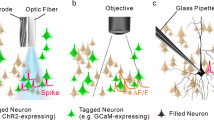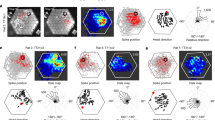Functional differentiation of the hippocampus along its longitudinal septotemporal axis is beyond doubt, though the factors determining this subregional specificity remain controversial. The spatial specificity gradient of hippocampal place cells decreases along its longitudinal axis from the septal pole to the temporal area. This difference in the scale of spatial representation suggests differences in the involvement of neurons in these subregions in the exploration and mapping of territories of different sizes. Using c-Fos as a marker for hippocampal neuron activation in novel environments, we studied the influences of exploration of arenas of different sizes on neuron activation in the septal and temporal subregions of fields CA1 and CA3 and the dentate fascia (DF) in C57BL/6 mice. The results of these studies showed that expression intensity was influenced by arena size, and a relationship between subregion activation factors and area size was found. Elevated c-Fos expression was seen only in the temporal part of the hippocampus, while significant changes in activation were noted in field CA3 and the DF in mice exploring the largest arena. c-Fos expression in the septal subregions showed no differences in arenas of different sizes. However, repeat testing of animals in an arena of a different size led to additional activation of expression in the temporal part of CA3 and the septal part of the DF. High neuron activity in the temporal subregion of the hippocampus may be due not only to the size of the arena explored, but also to the greater indeterminacy of a large space in terms of the biological significance of its different areas.
Similar content being viewed by others
References
Adhikari, A., Topiwala, M. A., and Gordon, J. A., “Synchronized activity between the ventral hippocampus and the medial prefrontal cortex during anxiety,” Neuron, 65, 257–269 (2010).
Anokhin, K. V. and Sudakov, K. V., “The systems organization of behavior: novelty as a leading factor in cerebral early gene expression in learning,” Usp. Fiziol. Nauk., 24, 53–70 (1993).
Bannerman, D. M., Rawlins, J. N., McHugh, S. B., et al., “Regional dissociations within the hippocampus memory and anxiety,” Neurosci. Biobehav. Rev., 28, No. 3, 273–283 (2004).
Bast, T., “Toward an integrative perspective on hippocampal function: from the rapid encoding of experience to adaptive behavior,” Rev. Neurosci., 18, 253–281 (2007).
Bernstein, H. L., Lu, Y. L., Botterill, J. J., and Scharfman, H. E., “Novelty and novel objects increase c-Fos immunoreactivity in mossy cells in the mouse dentate gyrus,” Neural Plast., 2019, 1815371 (2019), https://doi.org/10.1155/2019/1815371.
Chawla, M. K., Sutherland, V. L., Olson, K., et al., “Behavior-driven arc expression is reduced in all ventral hippocampal subfields compared to CA1, CA3, and dentate gyrus in rat dorsal hippocampus,” Hippocampus, 28, No. 2, 178–185 (2018).
Fanselow, M. S. and Dong, H. W., “Are the dorsal and ventral hippocampus functionally distinct structures?” Neuron, 65, No. 1, 7–19 (2010).
Fenton, A. A, Kao, H. Y., Neymotin, S. A., et al., “Unmasking the CA1 ensemble place code by exposures to small and large environments: more place cells and multiple, irregularly arranged, and expanded place fields in the larger space,” J. Neurosci., 28, No. 44, 11250–11262 (2008).
GoodSmith, D., Lee, H., Neunuebel, J. P., et al., “Dentate gyrus mossy cells share a role in pattern separation with dentate granule cells and proximal CA3 pyramidal cells,” J. Neurosci., pii: 0940-19 (2019), Epub ahead of print, https://doi.org/10.1523/JNEUROSCI.0940-19.2019.
Hinman, J. R., Penley, S. C., Long, L. L., et al., “Septotemporal variation in dynamics of theta: speed and habituation,” J. Neurophysiol, 105, No. 6, 2675–2686 (2011).
Jung, M. W., Wiener, S. I., and McNaughton, B. L., “Comparison of spatial fi ring characteristics of units in dorsal and ventral hippocampus of the rat,” J. Neurosci., 14, 7347–7356 (1994).
Kesner, R. P., “An analysis of dentate gyrus function (an update),” Behav. Brain Res., 354, 84–91 (2018).
Kjelstrup, K. B., Solstad, T., Brun, V. H., et al., “Finite scale of spatial representation in the hippocampus,” Science, 321, No. 5885, 140–143 (2008).
Knierim, J. J. and Neunuebel, J. P., “Tracking the flow of hippocampal computation: Pattern separation, pattern completion, and attractor dynamics,” Neurobiol. Learn. Mem., 129, 38–49 (2016).
Kuptsov, P. A., Pleskacheva, M. G., and Anokhin, K. V., “Nonuniform rostrocaudal activation of the hippocampus after exploration of novel spaces by mice,” Zh. Vyssh. Nerv. Deyat., 62, No. 1, 43–55 (2012).
Kuptsov, P. A., Pleskacheva, M. G., Voronkov, D. N., et al., “Characteristics of c-Fos gene expression along the rostrocaudal axis of the hippocampus in common voles after rapid training to solve a spatial task,” Zh. Vyssh. Nerv. Deyat., 55, No. 2, 231–240 (2005).
Lebedev, I. V., Pleskacheva, M. G., and Anokhin, K. V., “Analysis of the behavior of C57BL/6 mice in open field arenas of different sizes,” Zh. Vyssh. Nerv. Deyat., 62, No. 4, 485–496 (2012).
Maurer, A. P., Vanrhoads, S. R., Sutherland, G. R., et al., “Self-motion and the origin of differential spatial scaling along the septo-temporal axis of the hippocampus,” Hippocampus, 15, 841–852 (2005).
Moser, M. B. and Moser, E. I., “Functional differentiation in the hippocampus,” Hippocampus, 8, 608–619 (1998).
Nadel, L., “Dorsal and ventral hippocampal lesions and behavior,” Physiol. Behav., 3, 891–900 (1968).
O’Keefe, J. and Nadel, L., The hippocampus as a Cognitive Map, Oxford University Press, Oxford (1978).
Paxinos, G. and Franklin, K. B. J., The Mouse Brain in Stereotaxic Coordinates, Academic Press, San Diego (2004), compact 2nd ed.
Rich, P. D., Liaw, H. P., and Lee, A. K., “Large environments reveal the statistical structure governing hippocampal representations,” Science, 345, No. 6198, 814–817 (2014).
Royer, S., Sirota, A., Patel, J., and Buzsaki, G., “Distinct representations and theta dynamics in dorsal and ventral hippocampus,” J. Neurosci., 30, 1777–1787 (2010).
Strange, B. A., Witter, M. P., Lein, E. S., and Moser, E. I., “Functional organization of the hippocampal longitudinal axis,” Nat. Rev. Neurosci., 15, No. 10, 655–669 (2014).
Vinogradova, O. S., “Hippocampus as comparator: role of the two input and two output systems of the hippocampus in selection and registration of information,” Hippocampus, 11, 578–598 (2001).
Vinogradova, O. S., The Hippocampus and Memory, Nauka, Moscow (1975).
Author information
Authors and Affiliations
Corresponding author
Additional information
Translated from Zhurnal Vysshei Nervnoi Deyatel’nosti imeni I. P. Pavlova, Vol. 70, No. 6, pp. 763–769, November–December, 2020.
Rights and permissions
About this article
Cite this article
Kuptsov, P.A., Pleskacheva, M.G. & Anokhin, K.V. The Size of an Explored Space Is Reflected Differently in the Activity of Different Subregions of the Hippocampus along Its Septotemporal Axis. Neurosci Behav Physi 51, 734–738 (2021). https://doi.org/10.1007/s11055-021-01129-8
Received:
Revised:
Accepted:
Published:
Issue Date:
DOI: https://doi.org/10.1007/s11055-021-01129-8




